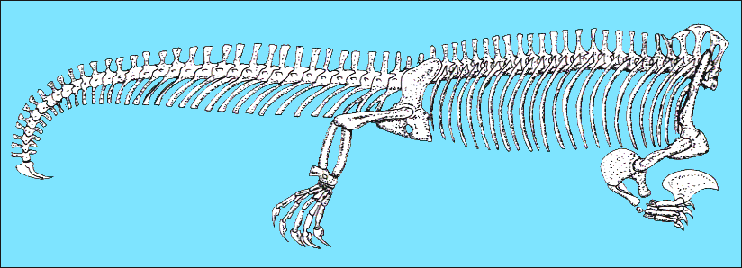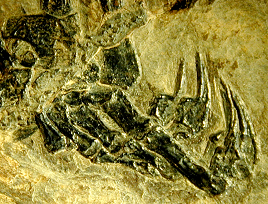

Despite the highly specialized characters shown by the skeleton, it is not easy to infer the mode of life of Drepanosaurus. The skeleton is very lightly built, with hollow bones; the carpus is only partially known, metacarpal, phalanges and claws are long relative to the radius, and highly mobile. The structure of the distal portion of the anterior limb is very odd and it is difficult to reconstruct its pattern and, consequently, to give a functional interpretation. The structure may possible be related to the development of flexor and extensor muscle of the manus, particularly for manoeuvring the huge claw of the second expanded digit. The preungual phalanx is very long and its distal end has the shape of a large, rounded bicondylar ginglymus, around which the long hooked and sharp claw pivoted. This latter (excluding the claw of the second digit of the manus) shows a ventrally expanded posterior margin that allowed attachment of strong distal flexors. These characters are considered as arboreal adaptation and are present in climbing reptiles, birds and mammals.

Drepanosaurus foot
Click here to see Jaime A. Headden reconstruction of the forelimb of Drepanosaurus
Home Research Triassic Reptiles